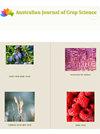Income diversification strategies of rubber farmers in Southern Thailand: an empirical study
Q3 Agricultural and Biological Sciences
引用次数: 0
Abstract
In Thailand, rubber is a very important cash crop of which nearly 95% is produced by smallholders. This study aims to investigate the income diversification strategies adopted by rubber farmers in Southern Thailand. Primary data was collected through a cross-sectional survey conducted in 12 sub-districts under six districts of three provinces (namely, Songkhla, Surat Thani and Trang) in Southern Thailand. A standardized questionnaire was used to receive responses from a total of 398 rubber smallholders selected randomly in the chosen areas (i.e. 12 sub-districts) for this study. The findings revealed that three income strategies, namely, rubber farm income only (R), rubber farm and non-farm income (RN), and combination of rubber farm, other farm, and non-farm income (RAN) were the dominant income strategies adopted by rubber farmers in Thailand. The study identified seven factors namely, age and education of household head, family size, land size holding, access to credit, land right and access to cooperative that had significant influence on income diversification strategies of the households. It was also revealed that rubber farmers with large household size are more likely to pursue all choices of income diversification strategies to increase their income. This might be due to the relation between larger family size and household labor or corresponding higher expenditure in the household. The study findings might be useful for policymakers to design and implement more effective policies to provide more income-generating ventures for rubber farmers in Thailand泰国南部胶农收入多元化策略的实证研究
在泰国,橡胶是一种非常重要的经济作物,其中近95%由小农生产。本研究旨在探讨泰国南部胶农的收入多元化策略。主要数据是通过在泰国南部三个省(即宋卡、素叻他尼和庄)六个县的12个街道进行的横断面调查收集的。本研究采用标准化问卷调查的方式,在选定的地区(即12个街道)随机抽取398名橡胶小农进行问卷调查。研究发现,仅橡胶农场收入(R)、橡胶农场与非农收入(RN)以及橡胶农场、其他农场和非农收入相结合(RAN)三种收入策略是泰国橡胶农民采用的主要收入策略。研究确定了七个因素,即户主的年龄和教育程度、家庭规模、持有土地面积、获得信贷的机会、土地权利和获得合作社的机会,这些因素对家庭的收入多样化战略有重大影响。研究还发现,家庭规模较大的橡胶农户更有可能采取各种收入多样化策略来增加收入。这可能是由于较大的家庭规模和家庭劳动力之间的关系或相应的较高的家庭支出。研究结果可能有助于决策者设计和实施更有效的政策,为泰国的橡胶农提供更多创收企业
本文章由计算机程序翻译,如有差异,请以英文原文为准。
求助全文
约1分钟内获得全文
求助全文
来源期刊

Australian Journal of Crop Science
农林科学-农艺学
CiteScore
1.20
自引率
0.00%
发文量
75
审稿时长
3.5 months
期刊介绍:
Information not localized
 求助内容:
求助内容: 应助结果提醒方式:
应助结果提醒方式:


